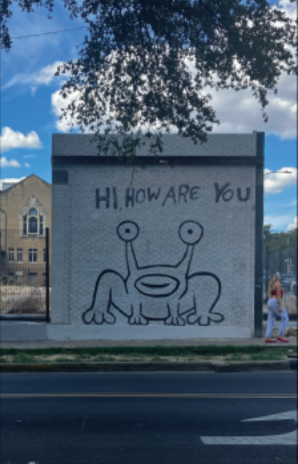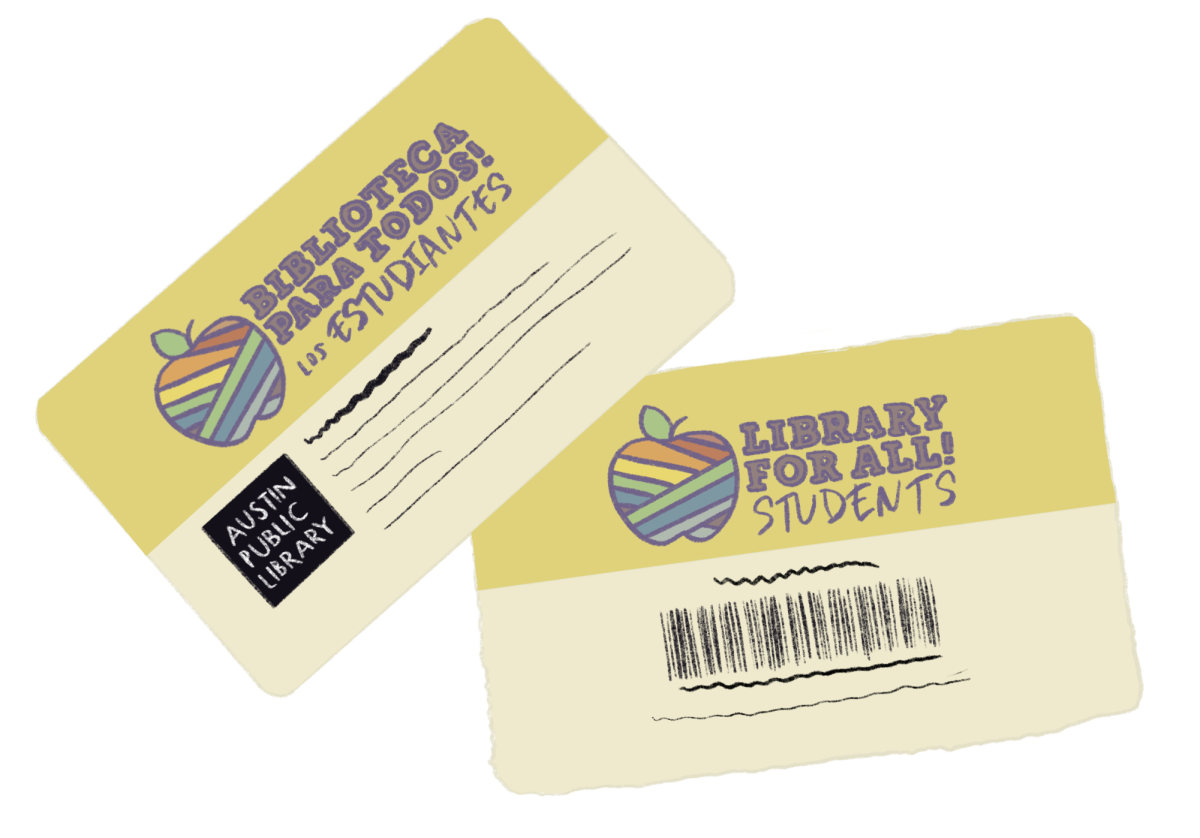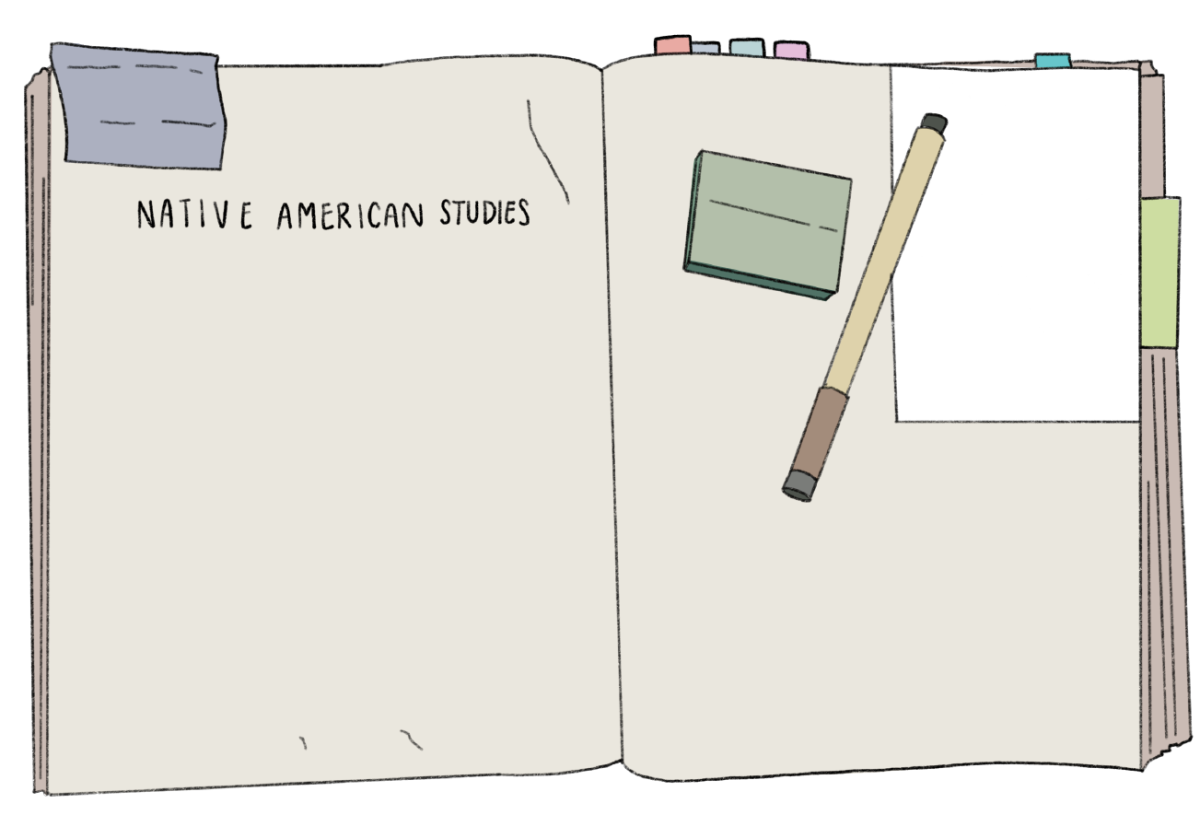
Teachers at LASA have often had the opportunity to be creative with what they teach, including designing their own electives. Kimberly Pettigrew, a LASA World History and U.S. History teacher, used this chance to create her own elective, Native American Studies, where students get to explore various cultures of different indigenous peoples in North America.
Pettigrew was first inspired to create this course because of her own Native American heritage. She studied indigenous history in college, and when the chance arose to design her elective, she took it and ran.
“I’m indigenous. My family is of Cherokee descent with my grandmother being 100 percent indigenous and my father being 50 percent,” Pettigrew said. “There has long been an appreciation of indigenous people in my life and it is what I majored in, but I have long found that most history courses fell short on indigenous history. When I had the opportunity to create an elective, I wanted one that focused on my particular area of interest and hoped students would be interested in it.”
When designing the elective, Pettigrew was influenced heavily by what she would’ve wanted taught to her when she was in high school. Because she developed the course by herself, she found it challenging to start completely from scratch since there weren’t any existing resources available.
“The process was just going through what I would have liked to see in a course when I was in high school,” Pettigrew said. “And then going to the resources that I had at home and at work to see what was available for me to use for planning purposes…The biggest obstacle was in regards to trying to find resources and lesson plans that had already been made so I did not have to develop everything myself although I eventually just developed 95 percent of the lessons myself.”
In the course, students are given the opportunity to explore the history of indigenous people and also issues that they have or are facing. According to Pettigrew it’s also a chance to take a deep dive into the different aspects of indigenous culture that make them unique.
“Native American Studies is a course that looks at the history of certain Native American nations in North America through not only their history but also their culture like art styles, food, religion, etc,” Pettigrew said. “The course looks at both historical and contemporary issues that indigenous people face in the United States.”
According to Pettigrew, the course is heavily research-based. While also exploring different cultures and systemic issues, the curriculum is designed in a way that mainly pushes students to research particular topics that they want to know in depth.
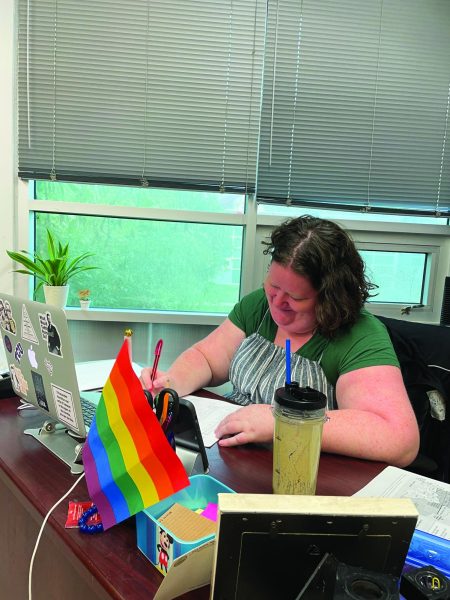
“It is geared to deal with a certain amount of research,” Pettigrew said. “The ultimate result of the course is each student develops a research portfolio on the indigenous nation of their choice that they research throughout the semester.”
As she has taught the elective for a few years now, Pettigrew feels that it’s a pretty successful course. Throughout teaching it, and even through the pandemic, Pettigrew has evolved the class into something she feels is a good fit.
“I feel like it’s been going well so far,” Pettigrew said. “I’ve been teaching it on and off since 2018 and from last year to this year, I’ve seen the number of students in the course increase. I was in the second year of teaching the course when COVID happened, so I did have to evolve it to include virtual lessons. Additionally, I’ve added in new topics such as COVID and its impact on indigenous communities, and I’ve added more modern TV shows to my representations in the media lesson as indigenous shows have started to be more of a thing on streaming services.”
Overall, Pettigrew feels the class is something that increasingly more people are interested in. As she developed it from scratch, and has adapted it through the years, Pettigrew feels like it’s something that she’s glad to be teaching and something she feels is enjoyable and beneficial for the students to learn as well.

When students are not ready to be faced with the crushing disappointment of not getting a job, the stress of finding the perfect (and realistically affordable) apartment, or the perplexing task of writing their own epitaph, the elective How to be an Adult offers a trial run. Corey Snyder, a LASA English III teacher, feels that students are often ill-prepared for the challenges of adulthood and decided to create How to be an Adult to address the issue. In the elective, students learn lessons and skills about adulthood that often aren’t taught in class.
“I realized that there were a lot of things that don’t get taught that I thought needed to be taught,” Snyder said. “Nobody ever taught me how to balance a checkbook, only that I have to take all these science classes, and nobody ever taught me how to cook. I’m going to cook and eat food every day but how often am I going to use algebra? And yet, I spent way more hours in school learning algebra than learning about cooking.”
Snyder mentioned that some of the difficulties of implementing his own course were bypassed since at LASA, teachers have more freedom to choose what they teach. However, when explaining the course to students or other adults, he finds trouble describing exactly what subject or department the class fits into.
“It doesn’t even really qualify for what they would call a life skills class,” Snyder said. “So to try to explain to people that this is a really important class is [difficult] because I can’t tell you exactly what kind of class it is because there’s not an official qualification for it. Technically, it’s categorized as a speech class, which I guess, because I speak in it, and they speak in it. But it’s very strange.”
Now that the course has been going on for a few years, Snyder feels more comfortable telling his students to trust the process. Through his experience, he has perfected the course and has figured out what lessons work and which ones don’t.
“It’s hard to prove to people that it’s going to work or that it’s a good idea when you’ve never done it before,” Snyder said. “Now that it’s been going on for a few years, I can rely on that and tell the new people coming in ‘just look, we’ve been doing this for a while I promise you it works.’ Once people get the concept, they’re usually the students who take the class and come back with good reviews. I have a lot of kids who come back from college and say, ‘I used my How to be an Adult skills today’.”
In his course, Snyder wants students to envision their life beginning to end and to start thinking about what their life would be like. He teaches them a variety of valuable skills that they’ll eventually need, from basics such as how to cook a meal all the way to what to expect at a funeral or when a death of a loved one occurs in your life.
“We start with food, nutrition, and cooking and groceries,” Snyder said. “Then we basically go up Maslow’s hierarchy. So starting with the most basic needs that we teach little kids, we teach them how to eat. Then we go to how to manage your time, and then how to find a job… then at the end of the unit, we talked about what happens when death happens. What happens when we lose loved ones? What is a funeral?”

In comparison to math or English classes, Snyder says there is a lot of immediate gratification that comes with the course. While teaching how to analyze literature, he says the learning process takes a while to develop, but with this class, it’s instantaneous.
“It’s way easier,” Snyder said. “The kids say, ‘oh, I never understood that’, ‘that’s how it worked’, or ‘I’m gonna go use this right now.’ That’s much more satisfying to me when I can see that kids can immediately and practically use things that we taught.”
Snyder wants students to understand that while making a plan is beneficial and helpful, oftentimes things don’t go according to plan. He wants them to understand that the unexpected will happen, and their life in the future may not look like what they envision it to be now.
“Make a plan,” Snyder said. “Understand that the plan is not going to happen. Right now, for me, this is not what I thought I expected or hoped my life would be like when I was 16. But I’m really glad I didn’t get what I wanted when I was 16 because I don’t want to be a 46 year old professional skateboarder. I’m really glad that you know my life and perspective changed and so did my goals.”
While he wants them to learn to dodge unexpected obstacles, Snyder also aspires for his students to have a better understanding of themselves when the course ends. Along with the course material, he wants them to understand that they are individuals and have their own unique paths.
“I think the most important thing for my students to understand is that each one of us is simultaneously an individual,” Snyder said. “Each individual has to figure out what is best for them uniquely and individually. What do you care about, but also, human beings are social animals, none of us lives on an island alone. The trick is finding a middle ground between where you do what you know and what is right for you, but that also plays well with everybody else.”
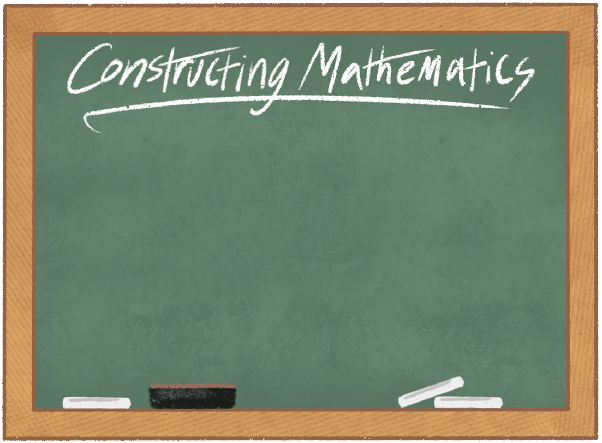
For students who can’t get enough of math and want to know not just the essentials of math, but also where it comes from, Constructing Mathematics is a class that is designed to meet those interests. This year, James Laughead, a LASA math teacher, is teaching Constructing Mathematics, a class he created where students get to explore how math works and the complex concepts behind it.
Laughead was first inspired to create Constructing Mathematics after teaching Advanced Mathematical Reasoning (AMR). He felt that in AMR, math was presented in an interesting and nuanced way that he and students taking the class found more enjoyable.
“I wanted a class that would deliver an experience like the one I had teaching AMR,” Laughead said. “Students work in a relaxed setting focused on understanding rather than memorization or using formulas, with topics that were more familiar to students so that they could see that all math is as interesting and nuanced as the math in AMR, even if they may not have seen it presented that way. This idea quickly led to me designing the course to cover ‘all’ math.”
With Constructing Mathematics, Laughead felt like he had a chance to explore the intricacies of math and let students actually dive into math topics in depth instead of just memorizing and applying them. The course involves a lot of proving why concepts work, and later students have the opportunity to choose what sort of proof they want to focus on whether it be related to Algebra, Calculus, or Physics.
“Constructing Mathematics is a class in which students focus on why ideas in math work,” Laughead said. “We prove that a circle’s area is r2 rather than finding the area of a specific circle that people don’t really care about, for example. We start by assuming as little as we possibly can, and aim to prove everything the students have seen in math classes up to Algebra II, and many things they haven’t, by building our understanding and theorems from the ground up.”
However, the process of creating the elective itself was very taxing for Laughead. Before creating the class, he had to make sure he understood the content well enough to teach it, which meant doing an extensive review of different math classes and making sure he could retain all the information he learned.
“If I know it well enough to teach it, I want them to be able to explore it,” Laughead said. “The process was, honestly, immensely taxing, but very fun. I’ve been working on this class for about six years and, until very recently, had been spending all of my time merely making sure that I understood the content well enough to teach it. Sure, I know to tell students that multiplying by a negative flips the inequality, but why does that happen? I needed to learn so much, and write it down so that I wouldn’t forget it later.”
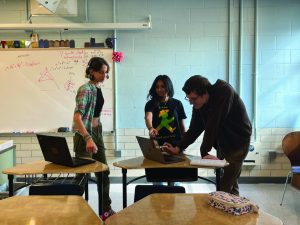
After spending years collecting information, Laughead transferred that into classwork students would be capable of doing and understanding. This summer, he perfected the logistical assessments, classwork, and lessons for the class.
“My summer was busier than it had ever been,” Laughead said. “I spent every weekday while my wife was at work either teaching myself new math, writing down my results, creating a lesson to walk students through the ideas, so that they found it more approachable than I did, or making assessments or some other logistical elements of the class.”
Since this is the first year Laughead is teaching this class, the main obstacle he experienced was the amount of work that it took to get everything ready. Due to the curriculum being fairly broad, Laughead had to make sure it was manageable for all students alike.
“I do feel like I missed out on summer break almost entirely, which has made it difficult to handle the year so far,” Laughead said. “Because the second semester is student-selected content, I also needed a way to standardize lessons and assessments so that students had a similar workload and schedule regardless of what they were working on. This wasn’t too hard, as I’ve always been a man of uniformity, but I know it’s impossible to balance it perfectly, so there will definitely be days that are bumpier than others for some students.”
Apart from organizing the curriculum, Laughead said the class is more time consuming compared to other math classes and has different rubrics and grading scopes. Additionally, since it’s his first year, Laughead also has to adapt a lot to his students and constantly adjust the workload accordingly.
“It’s a lot of work to make content for,” Laughead said. “The grading takes far longer than what I’m used to, since I’m judging their logic rather than their result, but it’s worth it. I know I want to keep learning new math, so I’ll try to find a way to integrate anything new I learn into the course for future years. I’ve got a to-do list that’s quite long already.”
Overall, Laughead states that the class seems to be going pretty well so far, with only a few hurdles. According to him, the students seem optimistic about the class, and for the time being he’s just taking it lesson by lesson and working on smoothing things out while going through.
“This is meant to be my idea of a perfect math class,” Laughead said. “I take every speed bump rather harshly, but it’s definitely been enjoyable for me and I hope that they’ve [the students] felt the same despite what are sometimes some chaotic days. I want my class to reflect what I know how to do myself, and I want to keep learning, so my class will keep growing in scope to match.”
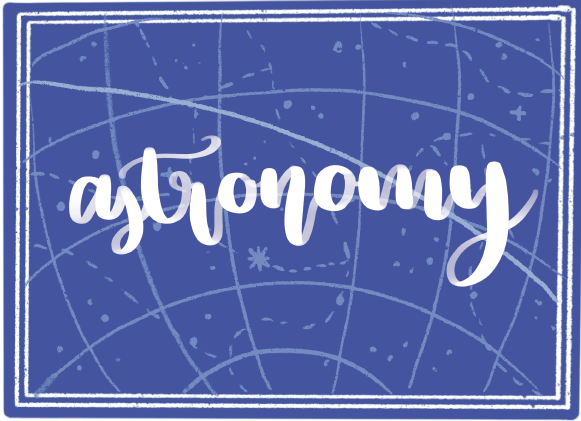
Astronomy at LASA is an immersive and hands-on experience for students. Ellen Owens, the Astronomy and Physics II teacher, made changes to the curriculum to make the class more immersive and engaging.
In Astronomy, students have the opportunity to understand what astronomy is and the history behind it. The class counts as a science credit that is weighted like an AP class and is usually filled half with juniors and half with seniors.
“It’s a survey of astronomy topics,” Owens said. “The main goal being to get students to understand the history of human’s relationship with the sky, how we know where in the universe we are, how old the universe and our solar system is, and what the possible futures of the universe are.”
Originally, Owens was handed down the coursework from Allison Earnhart, the previous teacher. Although Owens didn’t create the Astronomy elective, she has added and removed many lessons over the years and heavily personalized it to what she believes will be the best possible astronomy class for the students.
“LASA has had an astronomy course for a long time,” Owens said. “I believe I am the third astronomy teacher. I’ve made a lot of changes. I’ve incorporated a lot more lab work, particularly labs that have been put out by the European Space Agency and the University of Nebraska. I’ve also put a little more about the early philosophy of astronomy and now require students to do one night of observation during the year.”
The main obstacle Owens has found with managing the course is finding a balance in what level of difficulty she wants to incorporate into the assignments. Especially with students at LASA, Owens tries to elevate the difficulty level a little but simultaneously make sure it isn’t too challenging.
“A lot of premade content for astronomy tends to fall into two categories,” Owens said. “One is content focused on earth and space courses that are primarily middle school level or the other content aimed at university physics and astronomy majors which is a little beyond what we want to do in this class. So finding ways of making assignments both accessible and challenging for LASA students has been the biggest obstacle.”

Owens wants the course to connect to modern thinking, which she accomplished by adding more labs and lessons into the course. Additionally, Owens wants to add big changes in the coursework, which she plans on adding when she has time.
“I put a lot more focus on physics labs and ancient philosophies and how they relate to the modern view of the universe to help students connect more to it,” Owens said. “I’ve done it [astronomy] so much I can walk in and do it but as I said, it’s due for an overhaul soon. So next year or the year after I might give it a big change.”
Currently, the Astronomy class has been going pretty well, according to Owens. The only thing she’s planning on fixing with the course this year is updating the coursework to match more recent discoveries. Otherwise, she feels the class is nailed down.
“I’m on year six and I love the course,” Owens said. “I’ve gotten better at teaching it, it’s almost due for an overhaul now that we have so many new discoveries. There is a lot of change going on in astronomy right now and I’ll soon need to change the course to suit, but it’s a great elective because it’s naturally fascinating to many people, but a topic very few know the ins and outs of.”



